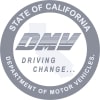Amador County Driver’s Ed FAQ
What is a driver education course?
A driver education course is a structured program that teaches new drivers the essential skills and knowledge needed to drive safely and legally. In California, driver education courses cover topics such as traffic laws, road signs, defensive driving techniques, and the effects of impaired driving. These courses are required for teens under 18 who want to apply for a California drivers permit. The program prepares students for the DMV written test, ensuring they are knowledgeable about the rules of the road. With the completion of at least 30 hours of instruction, either online or in a classroom setting, students are well-equipped to take the next step in the licensing process.
Is drivers ed online?
Yes, California drivers ed can be completed online. Online courses are DMV-approved and offer the same educational content as traditional in-person classes. Online learning provides flexibility, allowing students to complete the 30-hour instruction requirement at their own pace, from the comfort of their home or anywhere with internet access. This makes it a popular choice for busy students and families. After completing the course, students receive a certificate of completion, which is necessary to apply for a California drivers permit. Our online course includes interactive lessons, videos, quizzes, and DMV practice tests to ensure students are fully prepared.
Do schools offer drivers ed?
Most schools in California no longer offer drivers ed as part of their curriculum. However, many schools partner with DMV-approved providers like us to ensure their students have access to California driver education. If your school doesn’t offer drivers ed, you can still enroll independently in an online course. Online drivers ed allows you to meet state requirements and learn at your own pace. Many students in Amador County choose this option because it’s flexible and convenient. With our course, students can access lessons, quizzes, and DMV practice tests from any device, making it easy to fit learning into their schedule.
Is this course available outside of Amador County?
Yes, our California drivers ed course is available statewide. In addition to serving students in Amador County and Jackson, the county seat, we offer courses in Lassen County, Riverside County, Santa Clara County, San Luis Obispo County, Kings County, Yuba County, and Contra Costa County. Our services are also available in cities like Susanville, Riverside, San Jose, San Luis Obispo, Hanford, Marysville, and Martinez. With DMV approval, our course meets the same requirements no matter where you are in California. This ensures that students statewide can benefit from flexible, accessible learning.
How long is drivers ed good for?
In California, your drivers ed certificate does not expire. Once you complete the course and receive your certificate, it remains valid for use when applying for a California drivers permit. This allows you the flexibility to complete drivers ed at a time that works for you without worrying about a strict expiration date. However, it’s recommended to move forward with the next steps in the licensing process soon after completing the course, as DMV requirements for permits and licenses may change over time. Completing the entire process promptly helps keep the knowledge you’ve gained fresh in your mind.
What to bring to drivers ed?
If you’re taking our online drivers ed course, you don’t need to bring anything specific. All the materials, resources, and quizzes are provided within the course itself. You can access lessons from a computer, tablet, or smartphone with an internet connection. The convenience of an online course means you can complete it anytime, whether you’re at home in Amador County or on the go. There’s no need for textbooks, notebooks, or additional supplies - just a stable internet connection and a desire to learn. If you opt for expedited delivery of your certificate, ensure you provide accurate mailing details.
How much does a driving test cost in California?
The cost of the driving test in California is included in the $45 application fee for a California drivers license. This fee also covers the DMV permit test and up to three attempts at the driving test within a 12-month period. If additional attempts are needed, there may be a separate fee for retaking the test. It’s a good idea to prepare thoroughly for the California DMV behind the wheel test to avoid extra costs. Many students benefit from professional driving classes or supervised practice sessions to build their skills and confidence before scheduling their test.
How long is the California driving test?
The California DMV driving test typically takes around 20 minutes. During this time, the examiner evaluates your ability to follow traffic laws, perform safe maneuvers, and demonstrate vehicle control. The test includes tasks such as parking, turning, merging, and navigating intersections. The examiner will also assess your pre-drive knowledge, such as adjusting mirrors and using vehicle controls. While the test is brief, thorough preparation is essential to pass on your first attempt. Consider practicing in a variety of conditions, such as nighttime or busy traffic, to ensure you’re ready for real-world driving challenges.
What age can I get my permit in California?
You can apply for a California drivers permit at age 15½ after completing a California drivers ed course. Teens can begin drivers ed as early as age 15, which gives them time to complete the required 30-hour course and prepare for the DMV written test. Once you turn 15½, you can schedule your DMV appointment to take the written permit test. Remember, you must pass the test and meet all documentation requirements to receive your California instruction permit, which allows you to start practicing driving with a licensed adult.
Can you drive to school with a permit in California?
No, you cannot drive to school with just a California drivers permit. A permit only allows you to drive under the supervision of a licensed adult who is at least 25 years old. Driving alone, even for school-related activities, is not permitted. Once you pass the California DMV behind the wheel test and obtain your California provisional license, you’ll be able to drive without supervision, though certain restrictions still apply, such as passenger age limits and curfews for the first 12 months.
Where can I study for my driver’s license?
To prepare for your California class C license, start by studying the California DMV handbook. This official guide contains all the information you need to know about traffic laws, road signs, and safe driving practices. Additionally, take advantage of DMV practice tests to familiarize yourself with the format and types of questions on the California permit written test. Our California drivers ed course includes unlimited access to DMV practice tests, making it easier for you to prepare thoroughly and gain confidence before taking the real DMV test.
How to obtain a driver’s permit?
To obtain a California drivers permit, follow these steps:
- Complete a California driver education course. Once you finish, you’ll receive a certificate of completion.
- Schedule an appointment at the DMV. Use the DMV website to select a time that works for you.
- Gather required documents. Bring proof of identity, California residency, your social security number, and the driver education certificate.
- Take the permit test. Pass the California DMV permit written test, which includes questions about traffic signs and safe driving practices.
- Pass the vision test. Ensure you meet the minimum eyesight requirements, using corrective lenses if necessary.
- Pay the fee. The $45 fee covers your permit test and initial driving test attempts.
Once you complete these steps, you’ll receive your California instruction permit, allowing you to practice driving under supervision.












